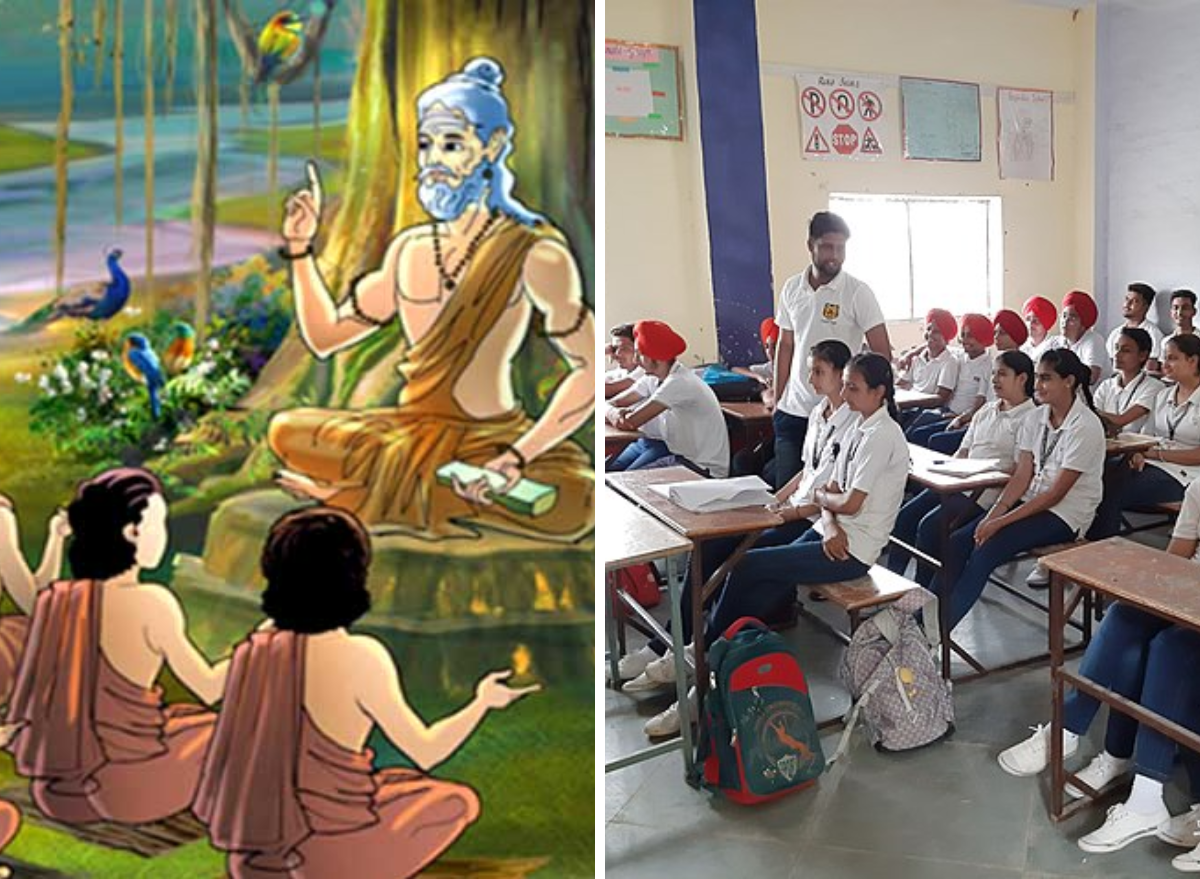Our country has always placed a premium on education, and that trend dates back to ancient times. Our India’s Gurukul system dates back thousands of years. The tradition of gurukulam dates back to the Vedic period. Only the Gurukul system of instruction existed in the ancient world. This strategy only made India become known as the “World Guru.”
The first Swaminarayan gurukul was founded in Rajkot, Gujarat, India, in 1948 by Shastriji Maharaj Shree Dharamjivan das Swami. In an effort to preserve their culture, several new gurukulam have developed both in India and abroad.
This custom is now fading away. In this essay, we’ll dive into the history of the Gurukul system, how education was delivered in times past, and how it compares to the contemporary schooling of today.
What is the Gurukul Tradition?
Gurukul refers to the geographic location where the Guru’s immediate family resides. In ancient times, the educator was called the Guru or Acharya, and their students were believed to be members of the teacher’s extended family.
Acharya was a popular instructor at Gurukul. One had to be eight years old to enter the Gurukul, and residents stayed, learned, and practised celibacy here until they were twenty-five.
In Gurukul, disciples of the guru study the Vedas. There were no distinctions made between students based on any societal norms. The Gurukul’s primary focus was on education and knowledge acquisition.
Theology was also taught as a subject in this school’s curriculum. Yoga and Yagya are inextricably linked to the institution of Gurukul. Every student is taught the basics of every trade, and only after they graduate do they get to pick a career based on their interests and the quality of their work.
But in the Gurukul style of education, where the student learns from the same teacher repeatedly at their own pace, the learner gains little exposure. Due to the nature of Gurukul’s protected community, its residents have limited access to news and data about the wider world.
Advantages of Gurukul Education
Teachers in “Gurukul” teach their students about the Hindu faith and the Vedas and provide them with a realistic worldview. Making children into decent people and instilling in them moral principles is their priority. Teachers in Gurukul place a premium on instilling ethical principles in their students.
The teachers in Gurukul worked to cultivate the students’ moral fibre in a way absent from modern classrooms.
All instruction was delivered in Sanskrit, the language of communication. They teach children about Hindu history, values, and customs and work to preserve the religion: better skill development and more self-control result.
Instructions from the “Guru” have always been the most important, and those in Gurukul are expected to do as they are told. Students wore the traditional Indian garments of the dhoti and kurta to class; otherwise, there was no prescribed uniform. In Gurukula, the teachers show their students how to adapt to any circumstance.
Modern Education System
Over time, the current educational system has developed, with Western models serving as a major influence. The development of new technologies has had an impact on it. Ebooks, video lectures, video charts, 3D images, etc., are all a part of this instruction system.
Without a shadow of a doubt, technological advancements have been incorporated into today’s classrooms. Using these methods, students can improve their understanding and retention of course material from the comfort of their homes. Modern research and development inform the ongoing improvement of educational practices.
Advantages of Studying in Modern School
It’s impossible to draw parallels between the “Gurukula” and today’s schools, where teachers use cutting-edge technology to help students grasp complex ideas.
The education system has been nearly overhauled due to the rapid growth of numerous technologies. Knowing your way around a computer has become increasingly important as time goes on.
Most classrooms will use either English or Hindi as their primary language of instruction. The use of Hindi as a common language for communication has nearly died out. However, only some institutions continue to instruct their students in Sanskrit.
Today’s schools are better equipped to provide students with various extracurricular activities, including sports. Most schools have air conditioning or fans installed for the comfort of their students.
Every student must dress in a neatly pressed uniform with a belt, pins, and an identification card. All subjects (math, English, Hindi, science, etc.) are taught and guided by teachers, and while the constant evolution of the curriculum may not be welcome, it is inevitable.
One guru was plenty for the students because there weren’t many. However, as the world’s population and standard of living rise, the educational system must adapt.
Conclusion
The two educational systems must work together. During that period, there was only one option for formal education outside the Gurukul system. Students received education and lessons in culture and discipline through this method. Under the Gurukul roof, the students developed good human qualities like love and discipline. Respect for one’s parents, teachers, and other adults is emphasized.



